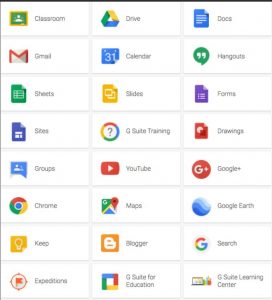Halfway Point – Week 7

WHOOP WHOOP – we made it to the halfway point of our semester!

This also means that the end of the tunnel for my Masters of Ed – Curriculum and Instruction journey only has 1.5 classes left – crazy to think about! Over the first half of the course, we have been exposed toa ton of information (some of it new and some of it old) surrounding Educational Technology. It is always great learning from and alongside fellow educators and hearing how they use specific tech tools in their practices.
What tools for online and blended learning seem most useful/relevant to me?
I have mentioned numerous times before I find trying to incorporate tech, especially new tech, into my teaching to be extremely overwhelming. Currently teaching in a school that is over 1000 students makes technology hard to come by when you are sharing 2 computer carts of 40ish laptops with over 100 students and multiple classrooms. With that many students, we have to do our best to ensure that each classroom has equal opportunity to access computers. This makes it extremely difficult to create a 1:1 student to computer ratio, but we try to supplement it with the use of smartphones and devices. I am also hesitant to really dive into new technology that I am not comfortable with due to the fact that there isn’t adequate time in a work day to try and train myself to a point I feel comfortable and confident enough to have my students use it. Work-life balance is extremely important to me with a young family at home. I need to prioritize my time spent with them when I am at home, not on a computer learning about new prospective tools.
With that said, the tools I utilize the most in my current practice are Google Classroom and Google Tools for Education. This is a program that I have become accustomed to over the last few years as I have moved into the Grade 7 and 8 world. I really appreciate the compatibility and ease of being able to upload material for students through the integration of all the Google Tools; Docs, Slides, Forms, Meet, Jamboard, Classroom, YouTube etc. I find this to be a great way for students to track what they have missed when they are away. I would like to utilize Google Forms to help streamline my assessment practices. I have used it extensively throughout a current novel study, where I have given students listening quizzes at the end of chapter chunks – a great way to monitor comprehension! Another component of Google Classroom that I really appreciate is that we are now seeing more integration from outside tools and sites. These tools give you an option to add material directly to your Google Classroom. This is an option that I have not yet taken advantage of, but it is something that I have noticed a few times.

One of the drawbacks of Google Classroom that I have experienced over the course of the last few years is the inundation of messages, alerts, marking and space taken up in my Google Drive. Throughout the course of the pandemic, I had many students decide they were going to start being not very nice people over the stream in Google Classroom. This led to many fires needing to be put out from a distance and many discussions on how to behave online (ugh…. Digital Citizenship at its finest)!
How would you feel about teaching with these tools in an online or distance education class, and how would your current context be impacted if you were to shift to an online/distance format vs. face to face?
 If I were to switch to online or distance education tomorrow (pleeeeeeeeease not again!) I would be leaning very hard on my friends at Google, specifically Google Classroom, Google Suites and Google Tools for Education. During the times of online learning over the last few years, I was teaching Grade 4-5 and they were not very technologically savvy; something that my students most definitely are today. Even with the younger students’ knowledge of how to use a computer and Google, I trudged forward. For a little more backstory, I started online teaching using SeeSaw and found it to be extremely frustrating as it was not very compatible with Google and I was constantly troubleshooting. I made the decision to switch to Google Classroom to save my sanity!
If I were to switch to online or distance education tomorrow (pleeeeeeeeease not again!) I would be leaning very hard on my friends at Google, specifically Google Classroom, Google Suites and Google Tools for Education. During the times of online learning over the last few years, I was teaching Grade 4-5 and they were not very technologically savvy; something that my students most definitely are today. Even with the younger students’ knowledge of how to use a computer and Google, I trudged forward. For a little more backstory, I started online teaching using SeeSaw and found it to be extremely frustrating as it was not very compatible with Google and I was constantly troubleshooting. I made the decision to switch to Google Classroom to save my sanity!
Like any other educator, one of the most important things is developing a relationship with students and being online or distance makes that a little bit more difficult. This is where utilizing Google Meets can try to replace that face to face aspect with students. This function would also have to take the place of my live lessons in person and have some sort of live instructional component for students. Being able to record lessons, upload to YouTube and easily integrate them into Google Classroom is another great way to give students instruction. The Google Tools for education also provide seamless ways to assign, collect and assess student work, something I would depend highly on if we were to be online. Not all families have printers/scanners at home and the ability to assign each student their own individual copy of material and assignments can really be a game changer for them to complete and submit their work.
The part of being an educator that I really enjoy the most is getting to know students by developing respectful, authentic and meaningful relationships. I take pride in my ability to develop these relationships and if I were to switch to online or distance education, this is where I feel my context would be impacted the most. You can always teach students how to use tools, but I feel that we are still seeing some effects of the lost relationships from the circus of being online, to in person to back online fiasco of this pandemic.
Cheers,
Bret
4 thoughts on “Halfway Point – Week 7”
Thanks for the post Brett, and congratulations on nearly completing your degree (I am only at the halfway point). I can relate to your laptop cart situation; it is common occurrence in my to hear upset colleagues on the intercom trying to find the laptop cart they booked out. The experts hold up the proliferation of mobile devices as our savior, but seem to ignore the fact that we have a responsibility to all students (including those who don’t have a cell phone or mobile data). Our school wi-fi isn’t exactly stable (it suffers from intermittent fits), and it is not fair to ask students to use mobile data to watch videos that require a lot of bandwidth. On the other hand I don’t want to fall behind my students, I will never be “with it” or on the same page as them, but I don’t want to come across as a complete dinosaur. I don’t think there is anything wrong with being slightly behind the curve, as I like to see which technologies will stick around and which are merely flashes in the pan. If anything this class has exposed me to some quick tools that don’t take a lot of time to master (I had never used a google jam board before), but I can’t see myself spending the time to learn how to use video editing software, unless provided targeted professional development time. As you noted our time is valuable and we have people relying on us outside of work.
Ugh! I felt that excitement Bret! The end is just around the corner, I can see it! I appreciate you mentioning digital citizenship, because holy do our kids need a good dose of it! Not only just because they need to learn to be nice to people, which is extremely important, but our kiddos need to build those skills to think critically about what they are reading and seeing online. They are continuously plagued with false information, picture perfect instagram posts, and trends. These skills of critical analysis will also serve them well offline as well. The equally as important lesson that digital citizenship must touch on is our students’ skills to be lifelong learners. Technology is going to grow and develop further and knowing how to exist in a kind, cautious, and critical nature within growing technology is crucial for the future.
Hi Bret,
I can relate to your post on a number of levels….except the end of your Master’s being nigh! Congrats…almost! When you wrote – “Work-life balance is extremely important to me with a young family at home” – it really hit on a personal level. When I took over the (new-to-my-division) role of Online Learning Consultant, my work-life balance was totally thrown out the window. I have a young family at home, too, but they sadly became secondary (temporarily) in the wave of navigating new, valuable EdTech for my division. You raise an important point about balancing these new digital expectations for educators AND having flourishing lives outside of work. As well, our students are hungry for these types of connections. As you mentioned, teaching digital citizenship is essential, but so are face-to-face connections that teach general humanity.
I am on Team Brett – relationships are the meat and potatoes of education. Relationships with your students, parents, colleagues, and community are difficult to do over a computer or phone. COVID reinforced this for us all. I bumped into two former students at the Riders’ game last night – they spent 15 mins rehashing their grade 8 year. None of the memories involved tech tools or subject matter of any sort – they retold stories of our grade 8 farewell, outdoor ed. trip, winning the city championship in aerial football, practical jokes in the classroom and school dances. It reminded me of the importance of these social aspects of school.